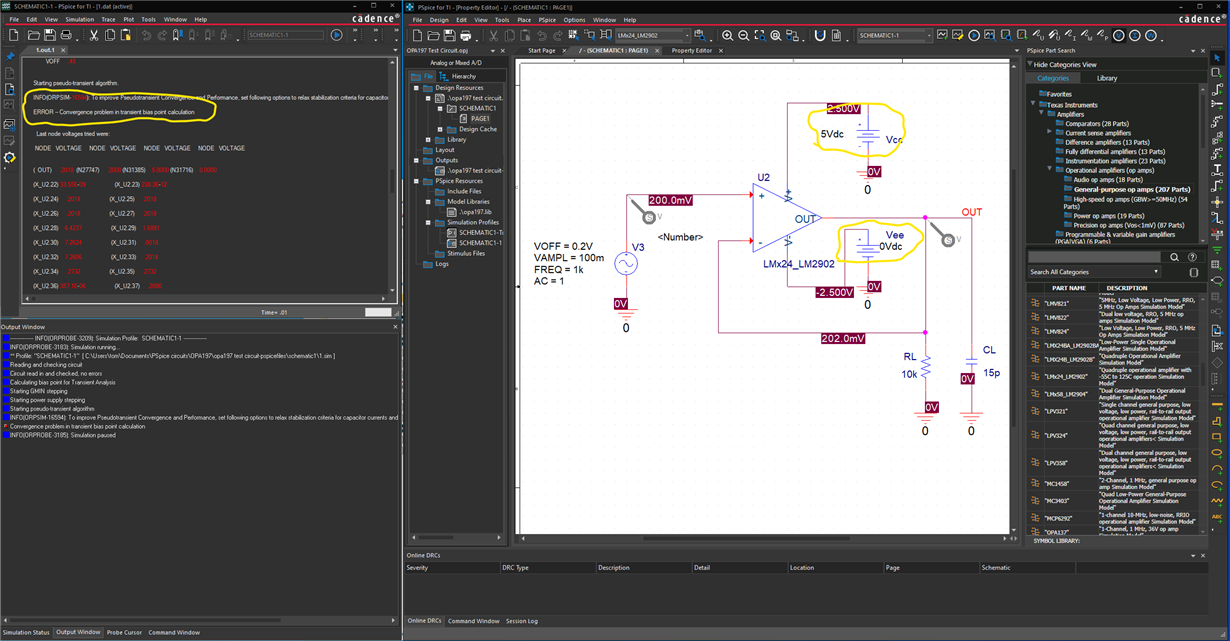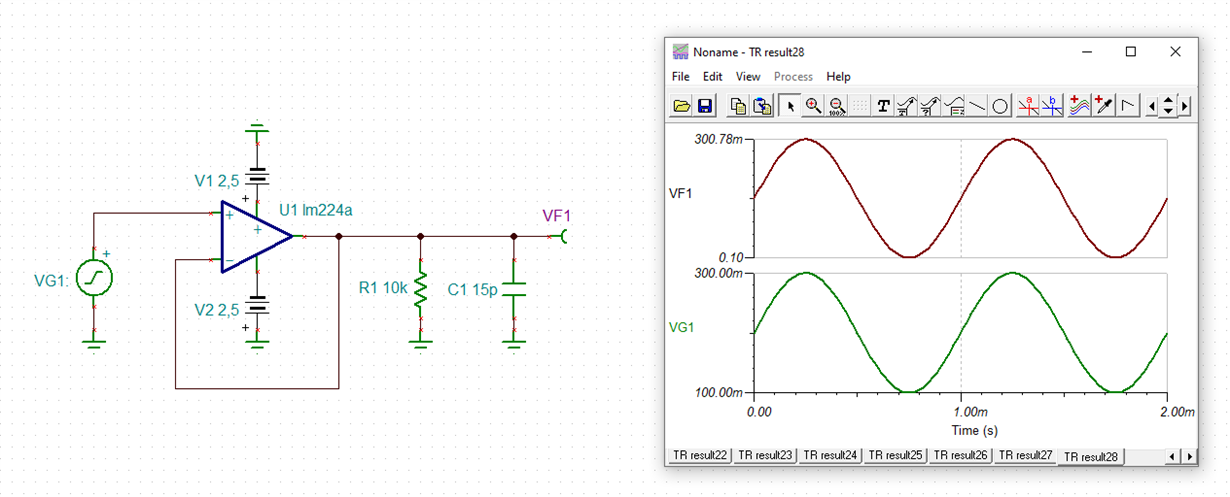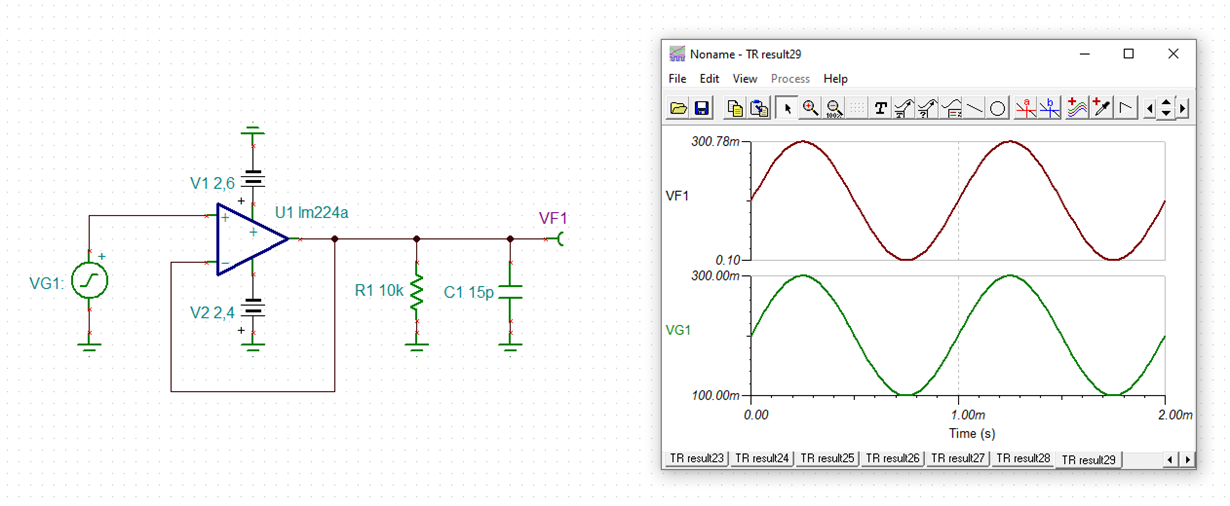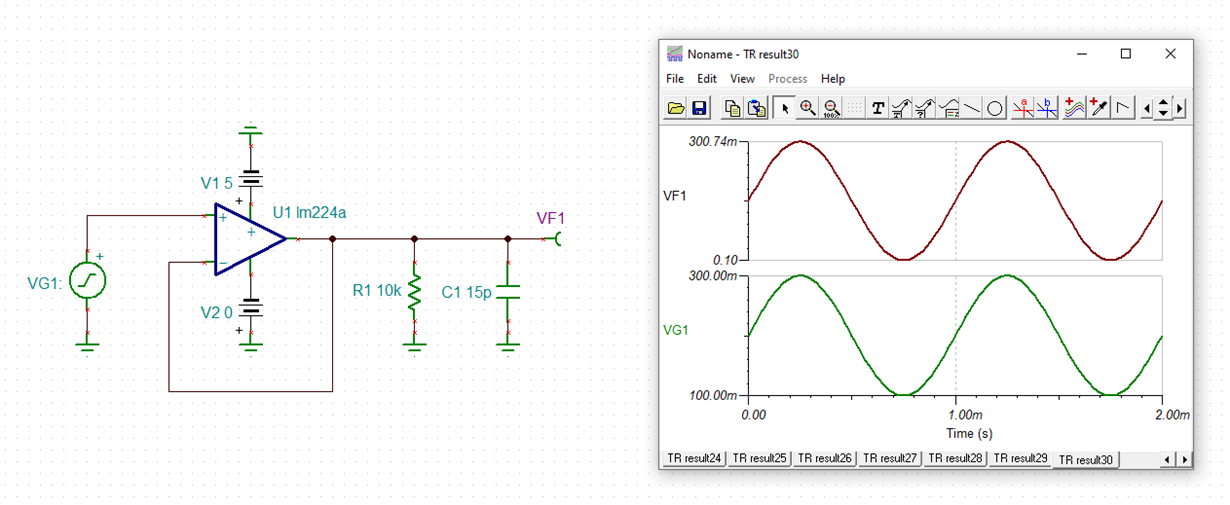Other Parts Discussed in Thread: PSPICE-FOR-TI, LM2902, OPA197, LM224, TINA-TI
Hi Team,
A customer tried to simulate LM224A in PSpice-for-TI but the simulation does not converge.
Here are the details of his inquiries.
"When using the LMx24_LM2902 model all works well when using + and - balance supplies. When I try to use +5 V and GND the simulation does not converge.
I tried using +2.5V and -2.5V supplies and the simulation runs. When I tried +2.6 and -2.4V supplies the simulation did not run. Am I using the model incorrectly?
When using the LMx24_LM2902 model all works well when using + and - balance supplies. When I try to use +5 V and GND the simulation does not converge.
It was part of the PSpice download.
It was one of many TI opamps modes available."
In my latest attempt I made to resolve the problem, I simply took the “opa197 test circuit” adjusted the offset of the signal source to 200mV, and verified the simulation ran properly. I then swapped out the op amp with the LMx24_LM2902 model (under the TI General OpAmp group list) and started trying the different power supply level settings.
Again the simulation ran well and provided the expected results with the supplies set at +2.5V and -2.5V. It did not converge with either voltage supply setting of +2.6V, -2.4V or with +5V, 0V.
The model used was not from the LM224A product page, it was from the library(s) installed with the PSpice-for-TI.
I obtained a couple screen shots showing the model working when the supplies are at +2.5 and -2.5 volts. The simulation failed under my desired +5v and GND condition. It also failed when the supplies were slightly 'unbalanced' at +2.6v and -2.4v.
May I ask your help how to fix this error.
Regards,
Danilo







